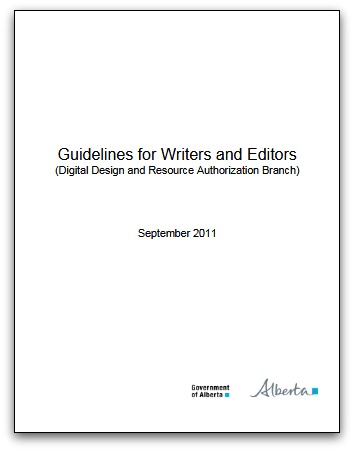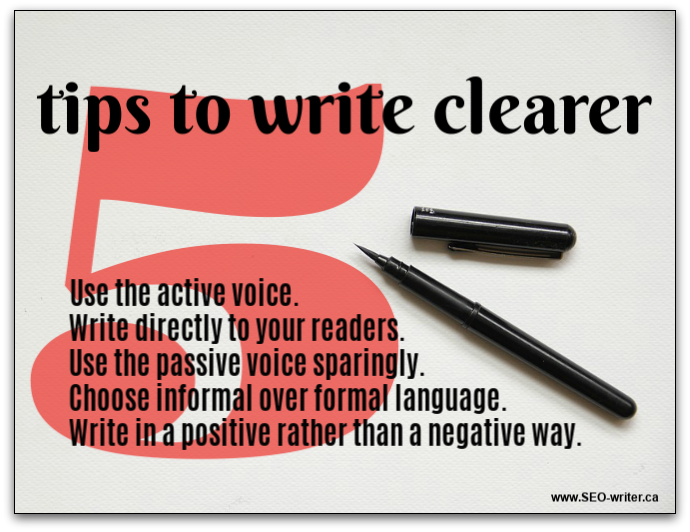Canadians need to write clearer, so that readers understand what they write. This guide from the Alberta government’s education ministry can help.
Canadians speak in plain language. But they often write in…well…convoluted, difficult to read language. This is not unique to Canada, by the way.
The Canada.ca content style guide can help. It gives a lot of great advice on how to write clearer, easier-to-read text.
Like the Canada.ca guide, the Guidelines for Writers and Editors (Digital Design and Resource Authorization Branch) is a digital style guide. That means it is written to respond to how people read on the Internet.
People read differently on the Internet than on paper, and they read differently for recreation than they do for research. So keep these differences in mind when you use any style guide.
Nevertheless, the principles of plain language remain. They transcend the medium. They transcend the purpose. They even transcend the audience.
If you want to be understood, you have to write clearly.
Create reader personas
This guide cleverly borrows a page from the world of advertising. Instead of creating buyer personas, it recommends creating reader personas.
Create personas of potential readers. Write down relevant facts about one or more fictitious but typical persons who might be using the web information. Use this profile information to think about:
- how these individuals might use the information you are writing
- what kinds of unique needs and questions they might have.
I find this really helps. When you sit back and picture a reader, then read what you’ve written through their eyes, suddenly it all makes sense. All, that is, except what you’ve written.
You might have made too many assumptions about what the reader already knows. You might find you need to use more normal language and explain some concepts.
- less jargon
- fewer acronyms
- clearer definition of terms
Begin with a summary of the content
The Guide also has us considering multiple contexts. Yes, the truly motivated reader will dig for the information she needs. But a less motivated reader might not. And then, your message is lost on them.
The guide tells us to follow a radical process: organize information logically. As a natural-born rambler, this is often a challenge for me. But you notice how there is a short summary to start out each post on this blog?
Start with a short summary of the entire content.
Example
This resource offers information and strategies to help students with AD/HD better manage their learning
I agree. It’s great advice that even I can follow.
Use bullet lists to organize your points
One of the more prominent technical recommendations in the Guide is to use bullet lists. I’m a big fan of bullet lists, because:
- They make a list look like a list.
- They make scanning easier.
- The page looks more organized (and, therefore, easier to read).
- They replace the need for long-winded, convoluted sentences.
Write short sentences
How important are short sentences. The guide gives five tips that all essentially say to shorten your sentences:
- Write simple sentences.
- Put only one idea in a sentence.
- Break long sentences into two or more sentences.
- Give your reader some relief with a sentence of 5 to 10 words.
- Keep sentences short and crisp. Aim for less than 14 and never more than 20 words per sentence.
Get rid of useless words
Here are some examples of useless preambles that the guide says we can mercifully remove:
- Please note …
- In this case …
- Despite the fact that …
- As most teachers are aware …
- It is important to remember …
- It is interesting to point out …
But the guide doesn’t stop there. It identifies meaningless words like “actually” and “basically”.
It identifies unnecessarily duplicated words, such as “first and foremost” and “each and every”.
And it points to where verbs can replace noun strings, such as “producing”, rather than “the production of”.
More writing tips for Canadians
Some other advice, consistent with plain language writing and readability, are:
- Use the active voice.
- Write directly to your readers.
- Use the passive voice sparingly.
- Choose informal over formal language.
- Write in a positive rather than a negative way.
One can never get too much plain language. This guide from Alberta offers up straightforward tips that any writer can follow. It’s great for Albertans, but it’s just as good for Canadians and other English-speaking earthlings.










